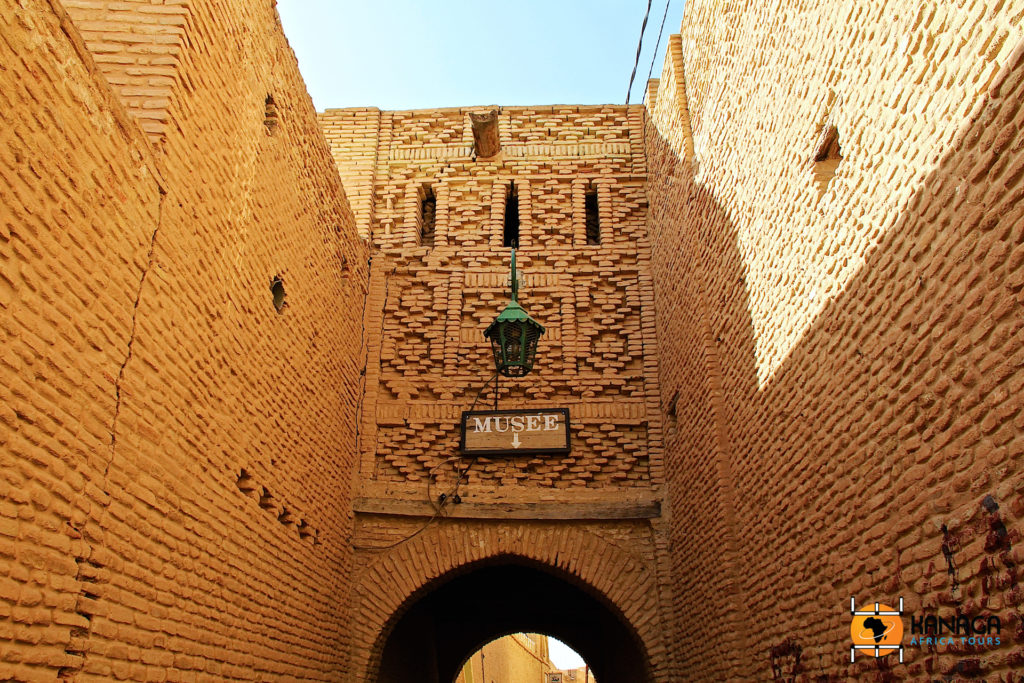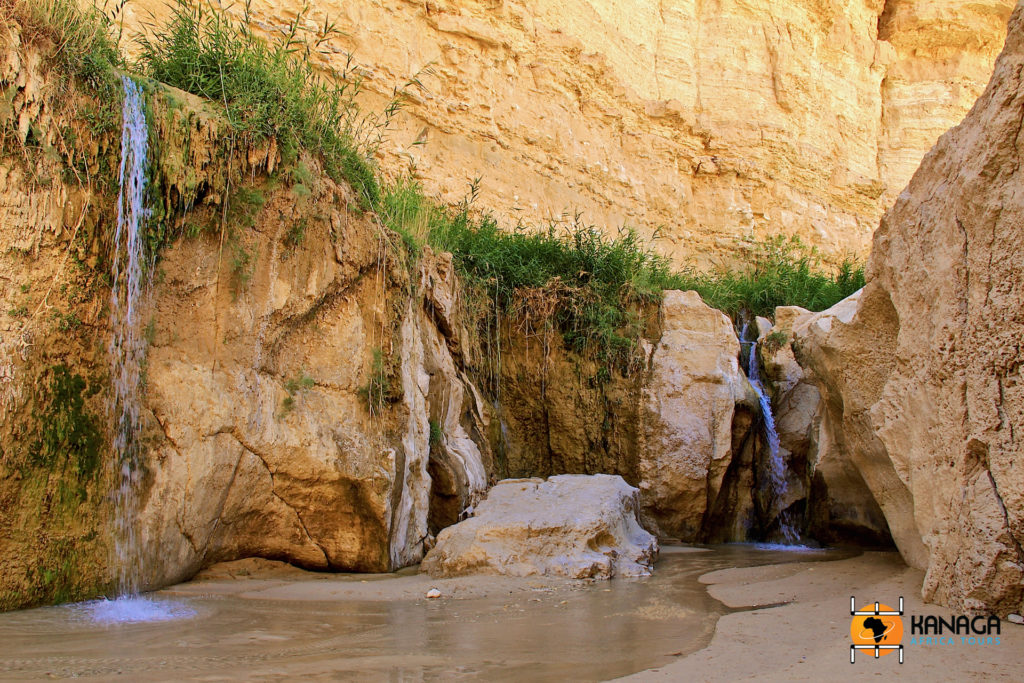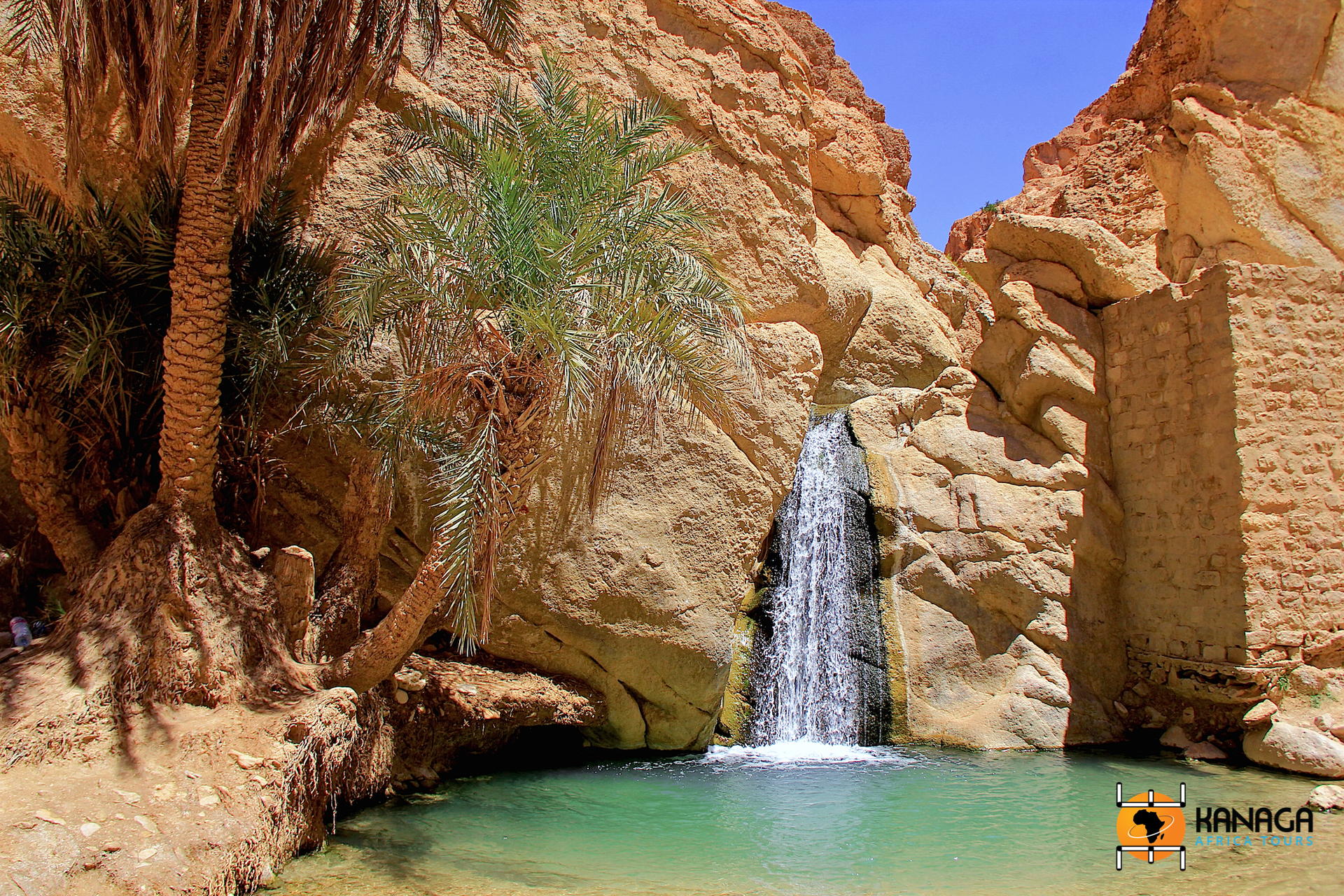© I. Fornasiero
In the heart of the Jerid region, in south-west Tunisia and a short distance from Algeria, between salt lakes and spectacular landscapes with rippling contours, between the yellow of the barren land and the green of the date palms, the scorching light of the Sahara reveals some of its most beautiful gems.
The city of Tozeur is located in an immense oasis whose palm grove is considered to be one of the largest in the world. A visit on foot or by horse-drawn carriage will allow you to enter this microcosm and be enchanted by the abundance of fruit and flowers growing in the shade of the palm trees, amidst the play of light and the murmur of the spring water, which a network of canals distributes throughout the oasis. As early as the 12th century, in fact, man intervened by setting up a functional irrigation system, which has enabled the palm grove to survive over the centuries, expand and guarantee a constant production of dates… the best in Tunisia!
The Tozeur old town, with its covered passages and sandy-coloured alleyways lined with houses with embossed walls, is unique. The region’s king tree, the palm tree, provides the wood for the beams and floors of the houses, while artistically arranged clay bricks, some protruding and some recessed, create amazing geometric patterns on the facades. Typically Berber motifs are also found in the carpets produced in this area, which are very complex and rich in colour.
In recent years, thanks also to increased tourist interest, accommodation facilities, theme parks and museums of considerable interest have sprung up around the old city. Such as the Musee Dar Cheraït, housed in an elegant palace and containing typical objects, artefacts and life-size reconstructions of scenes of daily life in the Berber world. Or the Eden Palm, a building that straddles the line between educational museum and centre for the promotion of gastronomic products based on dates, which allows visitors a complete immersion in the ecosystem of the Tozeur oasis.
Leaving Tozeur, in an arid and mountainous area dominated by the ochre colour of the rocks with no vegetation, it is possible to enter an impressive canyon on board a small vintage train, the Lezard Rouge, or venture by car to the Chebika, Mides, Tamerza and Nefta mountain oases, the real jewels of the region.
The first oasis we come across, in an unexpected explosion of palms, olive trees, henna plants and fruit trees, is Chebika, on the edge of the Ouadi Khanga, the watercourse that feeds this portion of green wrested from the rocks. It was an ancient Roman settlement, which a disastrous flood completely depopulated. Today it is possible to visit the old stone and clay dwellings and walk along the paths that lead to the area’s main attraction: a spectacular spring that gushes out of the rocks like a waterfall, reaching the oasis that is still fed by these waters, thanks to a skilful irrigation system.
From Chebika, along a mountainous road close to the border with Algeria, you reach the Tamerza oasis, with its village of clay houses that seems to be huddled in the presence of the majestic waterfall that gushes out in the middle of an alluvial valley carved into the rock, where you can stop for a moment of pleasant refreshment.
Proceeding westwards, a few kilometres from the border, you reach Mides which, due to its elevated position, offers a spectacular panoramic view of the deep gorges below. The ancient village is no longer inhabited due to a violent earthquake that affected the region, but what makes the visit unique is the landscape: a veritable open-air geological museum, with successive stratifications of sediments, fossils and minerals, including the characteristic desert roses, natural aggregations of calcium carbonate and sand crystallised in bizarre shapes.
Finally, before reaching the great Nefta oasis, the cradle of Sufism and considered the spiritual centre of the region thanks to its 24 mosques, it is worth making a diversion into the desert. And in a few kilometres, you will find yourself in Ong Jemal, projected into a lunar landscape where, among dunes and expanses of sand as far as the eye can see, it is still possible to visit the set used during the filming of the Star Wars saga.







